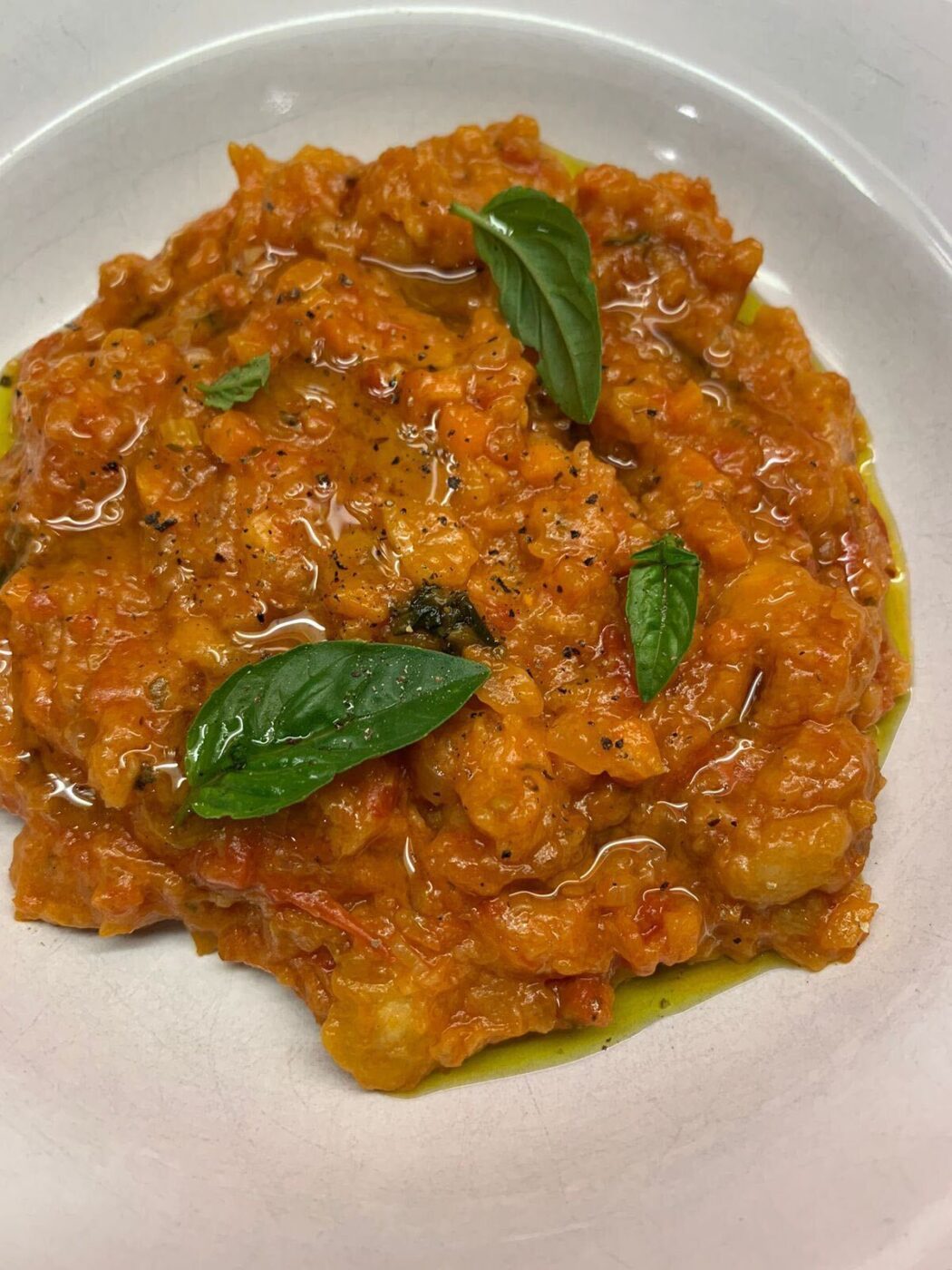Don’t let the name of this dish–literally “tomato mush” deter you–pappa al pomodoro is one of Tuscany’s most beloved dishes, and, like its cousin panzanella, the main ingredient is Tuscan bread. The saltless bread is extremely adaptable and perfect for soaking up all the flavors from the tomato and aromatics, so try to have fun with it. Born in the 18th century as a way to reuse the stale bread, the dish wasn’t really known outside of Florence until 1911, when Rita Pavone sang the song “Viva la pappa col pomodoro” in the TV adaptation of Il Giornalino di Gian Burrasca.
This simple recipe by chef Laura Capalbo is really just tomato (either fresh tomatoes, canned whole tomatoes, or passata), soffritto, herbs, and broth, thickened with leftover bread. The dish can be eaten at any time of year as an antipasto, primo, or simple spuntino; make it in summer during tomato season and serve chilled, or cozy up with a warm bowl in winter.
PAPPA AL POMODORO
Serves 2-3 as a primo
INGREDIENTS
- 1 small onion
- 1 stick of celery
- 1 small carrot
- 1 garlic clove
- Pepperoncini (optional)
- Basil, fresh
- Oregano, fresh or dried
- Olive oil
- Salt, to taste
- Pepper, to taste
- 1 cup of chopped tomato or passata di pomodoro
- 1 cup of stale bread or breadcrumbs
- 1 cup of broth or water
- Olio buono to finish (EVOO)
PREPARATION
- Finely chop the onion, celery, carrot, and garlic.
- Warm up some olive oil in a pot with the peperoncino (if you like a kick!), the oregano, and the stems of the basil; this will flavor the oil before adding the veggies.
- Add the veggies and a pinch of salt, and cook on a low heat until they soften. The more aromatics you add at this point, the more flavor it will have in the end–so don’t be shy!
- Once the veggies are cooked, bring the pot to a high heat and add the chopped tomatoes. Let them sizzle until it becomes a nice sauce. In summer, when tomatoes are juicy and delicious, choose the ripest ones and simply chop or grate them; in any other season, you can use passata di pomodoro or canned tomato, and this recipe will still work the same.
- Cut the stale bread into small pieces and add to the pot. If you want to make it even more flavorful, toast the bread with some olive oil before adding it.
- Cover it with broth or water and let it simmer on low for at least 10 minutes. If you see the mixture is too dry, add more liquid. Mix regularly, as it burns very easily. It should have a texture between a purée and a soup; it will be softer or chunkier depending if you used cut bread or breadcrumbs, so taste it to see how you like it best.
- Let it sit for at least 10 minutes before serving. Serve in a bowl with some fresh basil leaves and a generous amount of fresh Tuscan Olio Buono on top.

